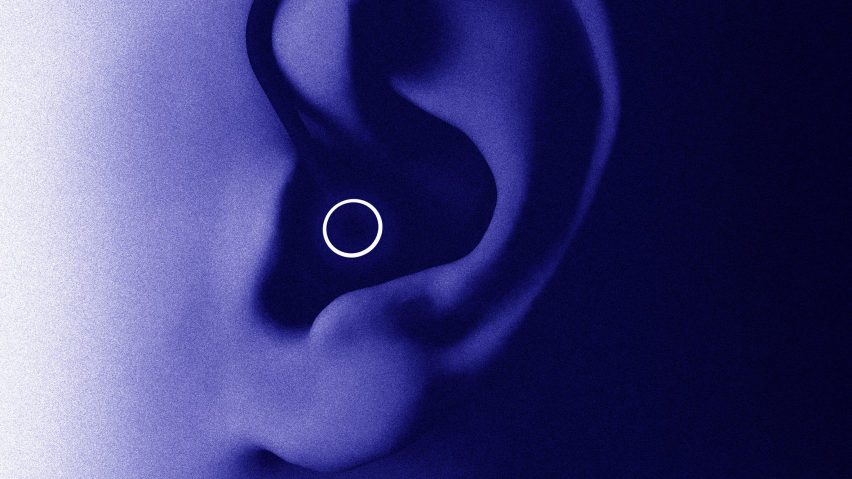Dezeen School Shows: we've rounded up five student projects presented on Dezeen School Shows that aim to upgrade and improve the design of healthcare apparatus.
These product and industrial design students have chosen to design medical products with the goal of improving patients' experience and subsequent wellbeing.
This roundup of projects includes a tampon applicator that can be used by people of all abilities, a wearable device that aims to treat sleep disorders, and an inflatable stretcher designed to help respond to accidents in the Canadian wilderness.
The selection of projects come from product design and industrial design courses at international institutions including Zurich University of the Arts, University of Wales Trinity St David, L'École de design Nantes Atlantique and Brunel University.
Adeline Leon, an Industrial Design and Technology student at Brunel University in London, designed a system comprising both hardware and software elements that aim to help alleviate the effects of iron deficiency.
Leon's smartphone app uses gamification to encourage patients to take their medication and follow the required nutrient-rich diet and a matching water bottle contains chambers that can hold tablets, iron-rich snacks, and water.
"Iron deficiency, if unaddressed, leads to anemia which can have serious, life-threatening consequences," said Leon.
"50 per cent of the medicated population are non-adherent to their regime due to forgetfulness, a lack of awareness, organisation, support and more."
Student: Adeline Leon
School: Brunel University
Course: Industrial Design and Technology BA
BA Product and Furniture Design student Emily Carter has designed a tampon applicator that can be used in a seated position to cater to people of all physical abilities.
The applicator is longer and has a curved form with an integrated loading cartridge, which allows it to be used without having to stand up – the only way of successfully using conventional applicators.
"The safety and convenience of being able to insert Sasha whilst sitting down are one of the product's main features," said Carter.
"By changing the shape of the applicator, Sasha promotes the safe use and application of tampons."
Student: Emily Carter
School: University of Wales Trinity St David
Course: Product and Furniture Design BA
Malo Sahores designed an inflatable stretcher as part of their degree to address emergencies in remote locations in Quebec that conventional rigid stretchers are ill-suited for.
The stretcher can be inflated before deployment and deflated once the patient has been successfully relocated, before being packed away for easy transportation and space-saving storage.
"When a person is involved in a wilderness accident in Quebec, they are often stranded in the middle of nowhere," said Sahores.
"Air-mat is a lightweight, innovative and agile device."
Student: Malo Sahores
School: L'École de design Nantes Atlantique
Course: International Design Strategy, Le Studio Montréal
Product Design Engineering student Kripa Gurung formulated a portable utensil for liquid medication storage and administration in a market predominantly catered towards hard pill-taking patients, according to the designer.
The device contains chambers that can hold various dosage measurements as well as a child lock to prevent misuse.
"More than 40 per cent of people in the general population have difficulty swallowing tablets and therefore take liquid medication," said Gurung.
"Bhari is a product designed to assist adults who take liquid medication while travelling, hence reducing the risk of non-adherence to treatment due to inconvenience."
Student: Kripa Gurung
School: Brunel University
Course: Product Design Engineering BSc
Linus Maurmann and Janosch Imhof designed, who study Industrial Design at Zurich University of the Arts, created a discrete wearable device that aims to treat sleep disorders.
The item is worn in the ear, similar to the placement of hearing aids or earphones, and measures brain activity during rest by monitoring energy within the auditory canal.
"The course of sleep is reconstructed in real-time and, if necessary, corrected by acoustic stimulation,"Maurmann and Imhof said.
"Neurospot observes, interprets and reacts."
Students: Linus Maurmann and Janosch Imhof
School: Zurich University of the Arts
Course: BA Diploma in Industrial Design
Partnership content
These projects are presented in school shows from institutions that partner with Dezeen. Find out more about Dezeen partnership content here.

